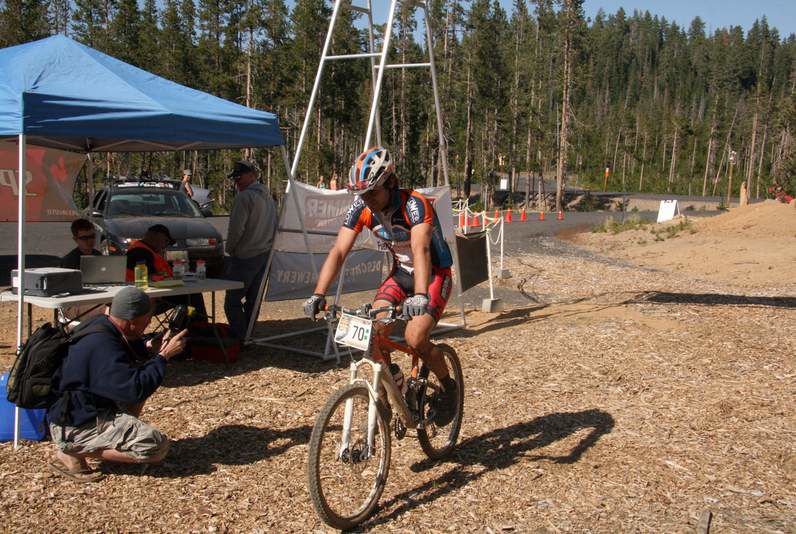A grueling 100
Published 5:00 am Monday, August 24, 2009

- Paul Clark, of Bend, crosses the finish line of the High Cascades 100 mountain bike race on Sunday. Clark placed fourth in the inaugural 100-mile event, which started and finished at Wanoga Sno-park.
His body and face covered in dirt, Sloane Anderson took a moment Sunday afternoon to hose off and then sit down on a bench at Wanoga Sno-park.
He had just finished negotiating 100 miles of rugged Central Oregon mountain bike trails, spending nearly 10 hours in the saddle during the inaugural High Cascades 100.
As far as 100-mile races, Id say this is right up there as one of the toughest ones, said Anderson, a veteran of endurance mountain biking. It was just constant demanding on your body … never much recovery time at all.
Nearly 90 mountain bikers from across the Northwest, including six women, took on the challenge of 11,000 feet of elevation gain, technical lava rock, and grueling, dusty climbs.
Starting and finishing at Wanoga Sno-park, about 15 miles southwest of Bend, the race took riders around Mount Bachelor on trails from Tumalo Falls to Lava Lake. Particularly challenging was the 2,500-foot climb, and then descent, of Kwohl Butte, just south of Mount Bachelor.
Between the lava and the sand, its a really hard course to stay focused, said race director Mike Ripley. The weather and the cool temperatures helped everything.
After chilly weather in the morning the race started at 6:15 a.m. riders enjoyed comfortable high temperatures in the low 70s on a sunny day.
Three bikers from Bend finished in the top five.
Chris Sheppard, of Bend, won the race in 8 hours, 37 minutes, 57 seconds. Anderson, also of Bend, finished in 9:26:42. John Fuzzy Mylne, of Riverside, Calif., was third in 9:33:31. Paul Clark, of Bend, finished fourth (9:55:24), and Geoff Huber, of Redway, Calif., placed fifth (9:59:49).
Mylne, 34, gets his nickname from his long, scraggly beard, which he said he has not shaved in 14 years. Mylne had plenty of dirt and grime to go along with his beard after finishing on Sunday. He rode a singlespeed bike and therefore could not shift into easier gears for the numerous punishing climbs.
Its no different than riding a gear bike, you just dont have to think as much, Mylne said. You cant wuss out.
Mylne lost about 15 minutes when he encountered a flat tire after the first of what he called nasty descents. He walked his bike nearly two miles before support crews provided a new tire tube and air.
Despite the setback, Mylne said he thoroughly enjoyed the race.
Its a fun course, with good trails, he said. Its nice to have a mountain bike course that you have to pay attention on. Theres a few sections that are real technical.
Flat tires and technical sections aside, how does one summon the energy and the will to ride a bike 100 miles on some of the most unforgiving terrain in the Northwest?
Anderson, who has raced in numerous 24-hour mountain bike races and 100-milers, said it is all about eating and drinking enough.
Obviously you put in the training time, said Anderson, 38. But really, the key is keeping nutrition and hydration consistently. Every 15 minutes, youre consuming.
The High Cascades 100 included several aid stations where riders could reload on water, energy bars, gels, and other food and liquid.
After doing multiple 24-hour races and 100-mile races, you kind of get a sense of how many calories you can take in and how much water, Anderson said.
Riders paid $250 to compete in the race. A portion of every entry fee went to the Central Oregon Trail Alliance, which builds and maintains trails in the region.
Ripley said the High Cascades 100 raised about $3,500 for COTA.





